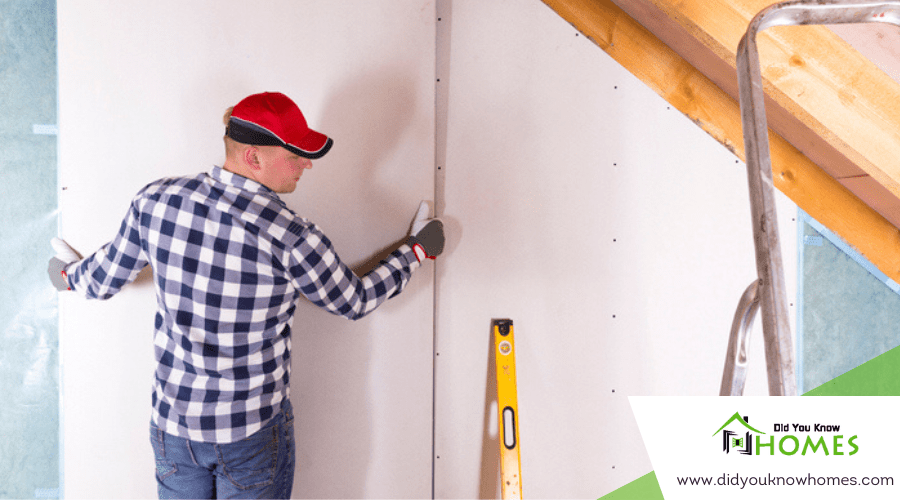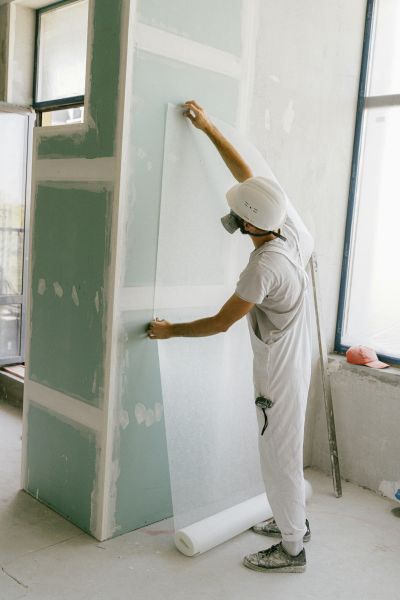Did you know that the average homeowner spends about 10% of their renovation budget on drywall installation and repairs? It’s a significant chunk of change, signaling the need for more cost-effective solutions. You’re likely searching for alternatives that don’t sacrifice quality for affordability. Plywood, stone veneer, and composite materials are just the tip of the iceberg. Each option offers unique benefits, from durability to easy installation, that could dramatically cut your costs. But how do you decide which material is right for your project? Stick around, and we’ll explore how to make your walls stand out without draining your wallet.
Affordable Drywall Alternatives
When you’re looking to save on your next renovation, consider plywood as a budget-friendly and durable alternative to traditional drywall. Plywood stands out for its cost-effectiveness, especially if you’re buying in bulk. This fact is not just about the initial savings; the durability of plywood means it’s resistant to wear and tear, making it a smart choice for high-traffic areas in your home.
Installing plywood is a quicker process, which means reduced labor costs. This is a major advantage if you’re working with a tight budget or schedule. Unlike drywall, plywood offers a unique opportunity for customization. Whether you’re painting, staining, or leaving it natural, plywood allows you to create a look that’s entirely your own. This flexibility has made plywood a popular choice for wall coverings for centuries.
Affordability and design flexibility aside, it’s crucial to mention that plywood doesn’t provide the smooth finish that drywall does. However, with the right considerations and finishing techniques, plywood remains a robust and budget-friendly choice for wall coverings, bringing both character and durability to your space.
DIY Drywall Installation Tips
Undertaking a DIY drywall installation can often slash your renovation costs in half, giving you the freedom to customize your space exactly as you envision it. By choosing a DIY approach, not only do you save up to 50% on labor costs, but you also gain the ability to tailor each aspect of the project to your precise preferences. Learning the ropes of drywall installation empowers you to manage minor repairs and modifications, making this skill set invaluable for any homeowner.
To make certain your DIY drywall installation is both smooth and cost-effective, take into account the following tips:
- Educate Yourself: Before diving in, spend time absorbing online tutorials and guides. These resources are packed with step-by-step instructions that demystify the installation process.
- Invest in the Right Tools: While it’s tempting to cut corners, quality tools can make a significant difference in the efficiency and outcome of your project.
- Measure Twice, Cut Once: This old adage holds true for DIY drywall installation. Accurate measurements and careful planning reduce waste and avoid the need for unnecessary additional materials.
Budget Repair Techniques
For an affordable solution to drywall setbacks, familiarize yourself with simple repair techniques that can greatly extend the life of your walls. By deploying a few key methods, you’ll not only fix current issues but also prevent future damage, ensuring that your walls remain in top condition for years to come.
| Step | Technique | Benefit |
|---|---|---|
| Patching | Use joint compound and mesh tape | Quickly repairs holes and cracks |
| Sanding and Priming | Properly sand and prime repaired areas | Creates a smooth, paint-ready surface |
| Attention to Detail | Meticulous patching and repairing | Prevents the need for more extensive repairs |
| Condensation Control | Address excess humidity | Prevents mold growth on repaired areas |
| Prevention | Implement ventilation and insulation | Reduces future condensation issues |
Maximizing Material Efficiency
After mastering budget repair techniques, it’s also smart to contemplate how you can maximize material efficiency in your next project. Opting for plywood as an alternative wall covering to traditional drywall is a savvy move. Not only does plywood present a cost-effective solution, but it also brings durability and aesthetic flexibility to the table.
Here are key strategies to enhance material efficiency:
- Buy in Bulk: Purchasing plywood in bulk can notably reduce the material cost per square foot. This approach is particularly beneficial if you’re working on larger projects or foresee future renovations.
- Choose Durability: Plywood’s ability to withstand wear and tear translates to long-term savings. Its durability means less frequent replacements or repairs, making it an economical choice over time.
- Customize with Finishes: The versatility of plywood allows for a variety of finishes, enabling you to achieve the desired look without compromising on cost. From paint to stain, wood panels can be easily customized to match different aesthetics, enhancing the overall value of your project without escalating the budget.
Avoiding Common Costly Mistakes
When starting on drywall installation or repair, it is crucial to avoid common pitfalls that can drive up costs unnecessarily. One of the first steps is accurately measuring your space. Miscalculating the amount of drywall needed not only leads to overordering but also to excess costs. Stick to what’s necessary and always double-check your measurements.
Opting for cost-effective drywall thicknesses is another savvy move. For most interior walls, a 1/2 inch thickness strikes the perfect balance between durability and affordability. It’s thick enough for most residential applications without adding unnecessary material costs.
Using standard sizes of drywall sheets, such as 4×8 or 4×12 feet, can dramatically reduce waste. These sizes are designed to cover large areas efficiently, maximizing your material use and minimizing the time spent cutting pieces to fit.
Don’t forget to shop around. Comparing prices from various suppliers or manufacturers can uncover more budget-friendly options. Prices can vary significantly, so a little research goes a long way.
Lastly, steer clear of unnecessary customizations or complex designs. These can inflate labor costs quickly. Keeping things simple not only speeds up the installation process but also keeps your budget in check.
Conclusion
In wrapping up, remember, you don’t have to break the bank for your drywall needs. Exploring alternatives like plywood can save you a bundle, offering both durability and a unique look. Embrace DIY installation and repairs, but don’t cut corners on learning proper techniques. Be mindful about material usage and steer clear of common blunders that could ramp up your costs. By following these tips, you’ll create a space that’s both stylish and budget-friendly.



